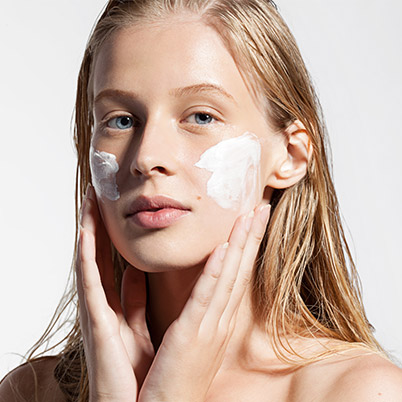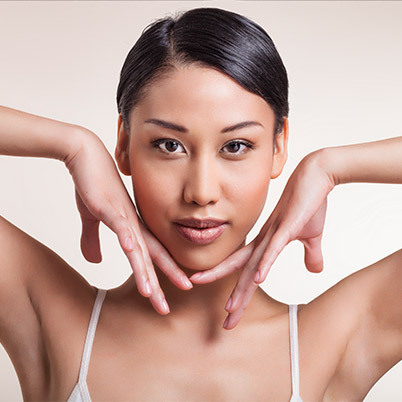Easier said than done, we know, especially when you're faced with a juicy ol' whitehead that's just ripe for popping, but don't pick! When faced with the tempting prospect, sit on your hands, put on a pair of gloves, paint your nails... do whatever you have to do to keep your fingers off your face. "Picking a blemish is like waking a sleeping lion. Don't pick or prod or do anything that's going to make it mad and create lots of inflammation," cautions Gohara.
This is the most important thing you can do to avoid ending up with scars and discoloration after the fact. If it's a 911 situation (i.e. when you wake up with a huge honker the day of a big event), Jamal suggests popping in to see your derm for a quick cortisone injection, which will knock it out, stat.
Image via Getty
This is the most important thing you can do to avoid ending up with scars and discoloration after the fact. If it's a 911 situation (i.e. when you wake up with a huge honker the day of a big event), Jamal suggests popping in to see your derm for a quick cortisone injection, which will knock it out, stat.
Image via Getty
Unfortunately, sometimes despite your best intentions, you may still end up with some discoloration post-pimple. In lighter skin types, the spots left by blemishes appear red, caused by dilated blood vessels under the skin and residual inflammation, explains Gohara. A retinoid can help (by keeping the pore healthy, it also helps create healthy new skin cells in the process, she says), though for red discoloration, in-office solutions are your best bet. "Light-based treatments, such as IPL or lasers, can target those blood vessels to help minimize the redness," explains Jamal.
Image via SanovaDermatology.com
Image via SanovaDermatology.com
In darker complexions, blemishes often leave brown marks: "Any kind of inflammation in dark skin results in the overproduction of pigment, creating dark spots where the pimples once were," explains Jamal. For these stubborn spots, hydroquinone is the ingredient of choice prescribed by dermatologists (though you can also get it in lower concentrations over the counter.) Still, you can't use it if you're preggers, and there has been some controversy surrounding its safety; kojic acid, arbutin, and vitamin C are alternative options that can help fade spots and brighten a mottled complexion. Try Juice Beauty Green Apple Brightening Essence, $35.
Regardless what color your spots are, to achieve clear skin, you must be extra diligent about sun protection. Any sun exposure will make both red and brown spots worse, and completely counteract any of your fading attempts, points out Gohara. Use a broad-spectrum sunscreen with at least SPF 30 daily, and reapply it every two hours. A spray, like Kate Somerville UncompliKated SPF 50 Soft Focus Makeup Setting Spray, $38, makes regular reapplication sups easy.
Regardless what color your spots are, to achieve clear skin, you must be extra diligent about sun protection. Any sun exposure will make both red and brown spots worse, and completely counteract any of your fading attempts, points out Gohara. Use a broad-spectrum sunscreen with at least SPF 30 daily, and reapply it every two hours. A spray, like Kate Somerville UncompliKated SPF 50 Soft Focus Makeup Setting Spray, $38, makes regular reapplication sups easy.
The bad news: Deeper, cystic acne can leave indented marks in the skin, even if you've never picked at it. The good news: While there's no at-home solution for this type of textural scarring, fractionated laser treatments, such as Fraxel, can help smooth and clear your complexion. These work by removing tiny plugs of damaged skin, stimulating the natural repair process, explains Jamal. The downtime is minimal, only about three days, though you'll need at least four to six treatments in order to see results, and the price tag can be hefty (around $1,000 per session).
Image via acnespecialists.com
Image via acnespecialists.com





